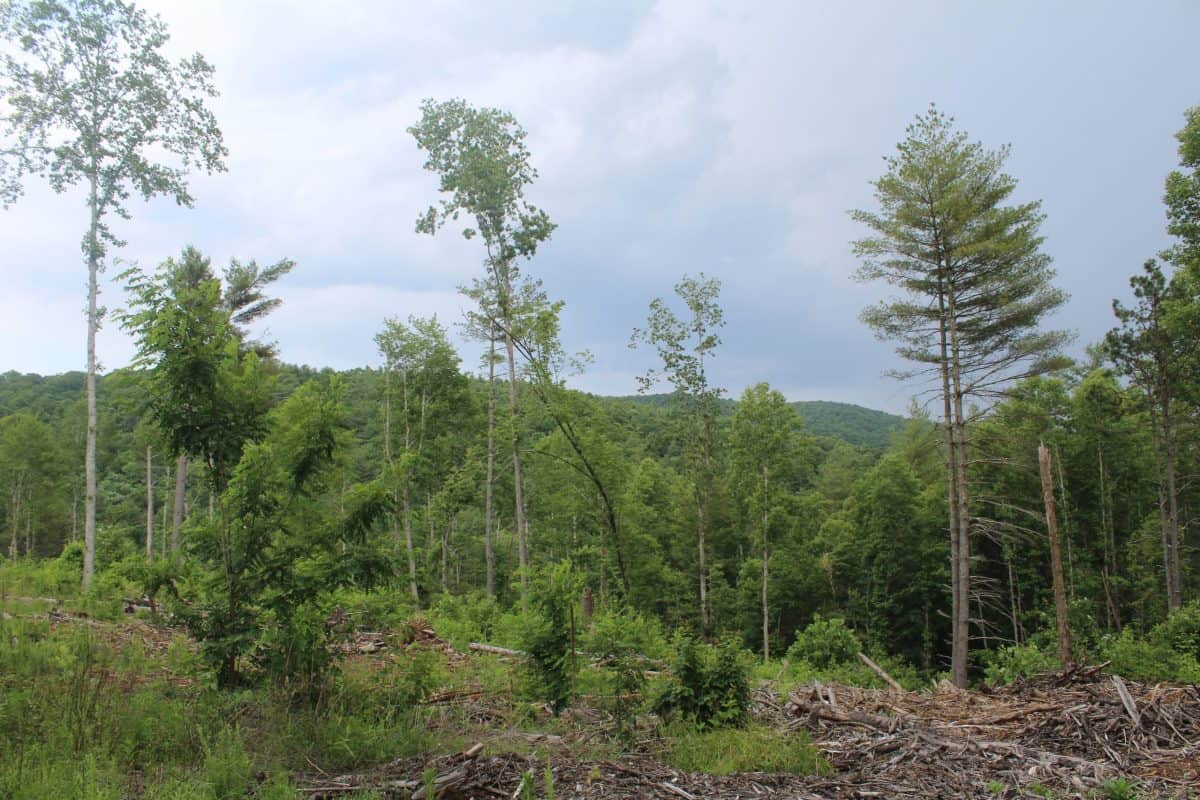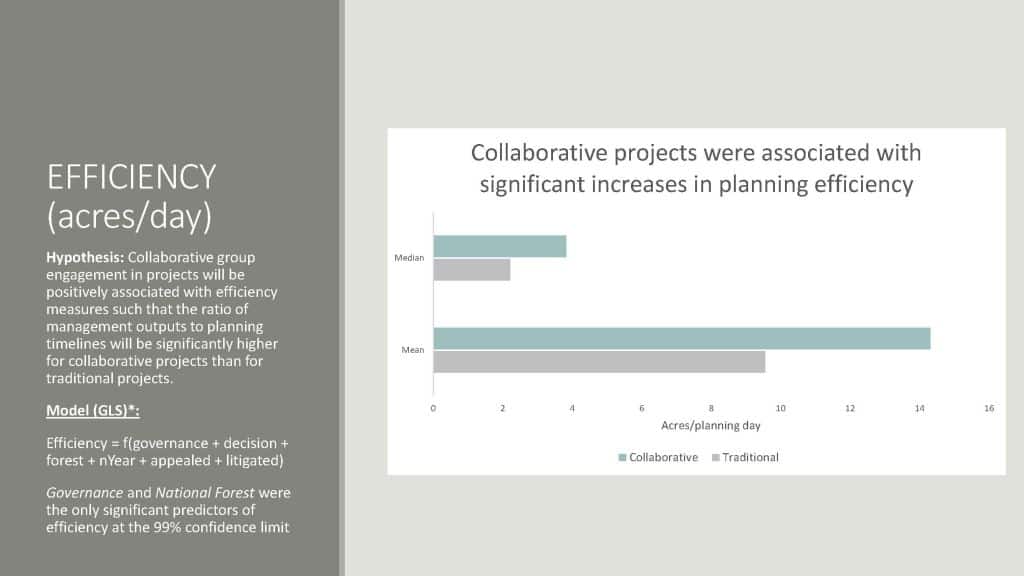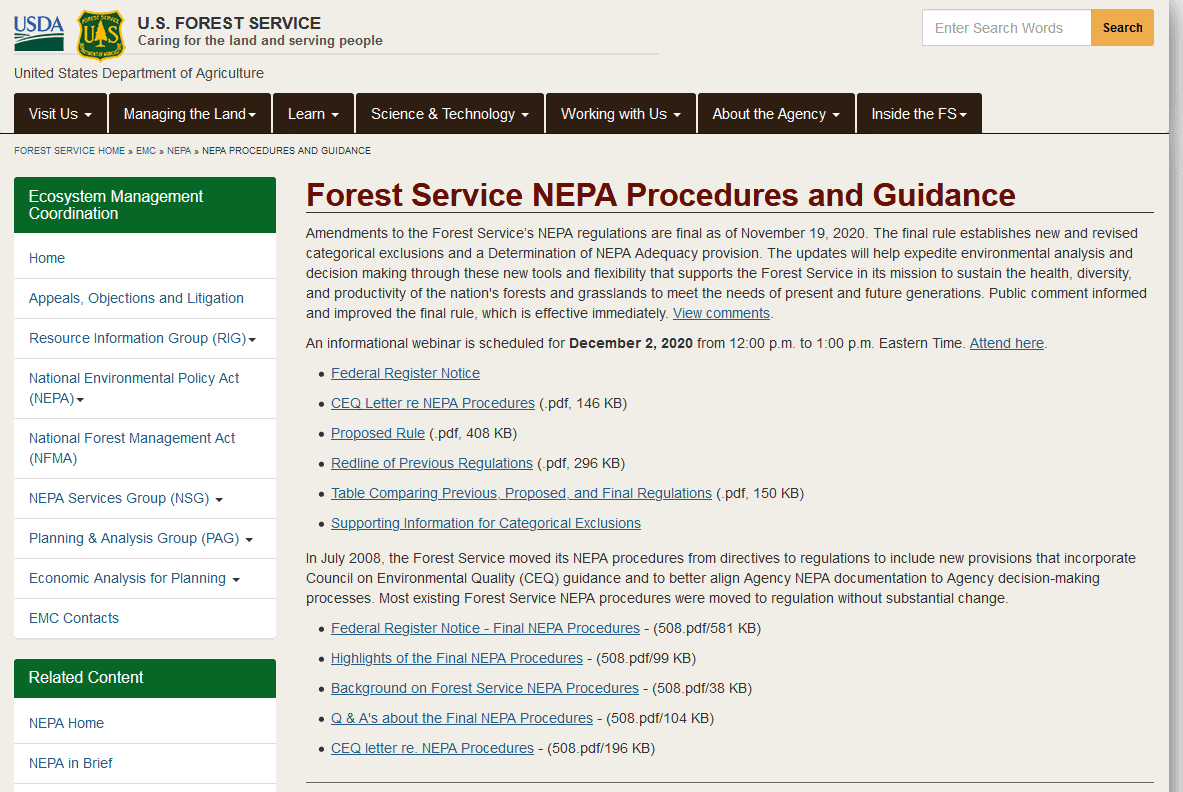If you’ve been following this in a casual way, you might have heard “this is the best thing since sliced bread” or “the Trump administration has eviscerated NEPA.” But what’s really in it? I asked Joe Carbone, one of the most wise, thoughtful, and experienced NEPA experts I know, to give his views and to kick off a discussion.
According to the Council on Environmental Quality (CEQ), their revision to the National Environmental Policy Act of 1969 (NEPA) regulations (40 CFR 1500-1508) “updates, modernizes, and clarifies the regulations to facilitate more efficient, effective, and timely NEPA reviews by Federal agencies.” Multiple organizations have raised complaints about the revised regulations undercutting NEPA’s goals.
We can engage in many discussions about the pros and cons of the CEQ revisions; however, as a long-time NEPA practitioner and policy wonk, I am first asking whether the revisions will meet CEQ’s intended outcomes. While the 2020 regulations are somewhat more modern, I do not understand why the administration and industry groups are cheering the changes as an accomplishment for future infrastructure projects requiring Environmental Impact Statements (EIS). Although contrasting flowcharts at the regulation rollout in Atlanta showed a dramatic change under the revised regulations, the changes will fall short of CEQ’s goals when it comes to EIS efficiency.
The regulatory impact analysis for the rule is qualitative, attributing savings to the same efficiencies in the 1978 regulations (reduce unnecessary paperwork, reduce delay, improve coordination, focus less on non-significant impacts). The greatest reduction seems to be based on the now required presumptive time limit for EISs (58% reduction assuming a 2-year completion time).
Generally, some of CEQ’s changes merely reorganize the regulations and incorporate modern technology, current agency practice, CEQ guidance, and case law. These have little to no impact on future efficiency since they are already used today. However, other changes remove requirements that were already based on case law (i.e. cumulative and indirect effects) and add many new requirements [i.e. notice of intent request for potential alternatives, information, and analyses [1501.9 (d)(7)], summary (1502.17), comments on the summary [1503.1(a)(3)], and a certification in a record of decision [1505.2(b)]. The uncertainty surrounding eliminated requirements originally based on case law and new requirements will surely extend the cost and time needed to prepare an EIS.
Removing previous requirements that were based on case law such as indirect and cumulative effects leaves the impression these types of effects no longer need to be considered. This poses uncertainty for Federal agencies as they debate the merits of whether to include them. This is a change the environmental community and the courts are not likely to ignore. In the end, agencies will still need to consider indirect and cumulative effects; however, the uncertainty, debate, and resulting litigation will undermine timely decisions and implementation.
The requirements associated with a new summary in the draft and final EISs (this is in addition to the required executive summary) will take more time and documentation to implement as this requirement spans from the notice of intent to file an EIS through potential litigation after a decision. This problem starts with one of the four new requirements in a notice of intent to file an EIS. Agencies must now include “a request for identification of potential alternatives, information, and analyses relevant to the proposed action.” This information ties to the new requirement for including a summary in the draft EIS that identifies “all alternatives, information, and analyses submitted by State, Tribal, and local governments and other public commenters during the scoping process.” This summary then ties to the new requirement for a draft EIS, to “invite comment specifically on the submitted alternatives, information, and analyses and the summary thereof.” The final EIS must also include a summary of “all alternatives, information, and analyses submitted…in developing the final environmental impact statement.” This summary then ties to the new requirement for a record of decision, to: “certify in the record of decision that the agency has considered all of the alternatives, information, analyses, and objections submitted by State, Tribal, and local governments and public commenters.” All of this is tied to judicial review, where “Comments or objections of any kind not submitted, including those based on submitted alternatives, information, and analyses, shall be forfeited as unexhausted” [1500.3(b)(3)]. As the regulatory impact analysis states: “CEQ expects the exhaustion requirement to reduce the litigation costs that NEPA generates.” As I see it, this is a typical approach to fix NEPA litigation – add more documentation. How does this shorten timeframes and speed decisions?
Agencies already receive thousands of comments on draft EISs, including articles, research, photos, and other information – relevant or not. You can bet they will receive many more comments covering a wide spectrum of “alternatives, information, and analyses” along with traditional comments on alternatives and effects during scoping and the draft comment period just to cover commenters’ potential litigation needs. Agencies will need to track every comment related to each commenter, prepare the summaries for the draft and final EISs, certify in the record of decision that the comments were considered, and review standing eligibility in case of a lawsuit.
With new regulatory interpretations and requirements, there is an added burden of showing the agency took a hard look and was not arbitrary and capricious in its findings, decisions, and certifications. This will take quite a record. While agencies are compiling records they will also be counting pages to keep the EIS under the now required 150-300 pages (1502.7), marking time to get to a decision within two years [1501.10(a)(2)], and tracking EIS costs to put on the cover [1502.11(g)]. Perhaps those are the requirements designed to speed the process, but they are more likely to be distractions and agency time-sinks on top of the new summary requirements.
Do those who are cheering the revised NEPA regulations see something to speed agency decisions or have they been fooled by messaging and optics? I do not understand how more process and documentation requirements will shorten timelines, but I am open to hearing how others see these changes playing out if the revised rule is implemented.
Joe Carbone, Carbone Consulting, LLC
Joe Carbone is a National Environmental Policy Act (NEPA) consultant and trainer. He retired after 37 years with the U.S. Forest Service where he oversaw the agency’s NEPA policy in Washington D.C. and Atlanta. He served as Deputy Associate Director for NEPA at the Council on Environmental Quality in 2016.








